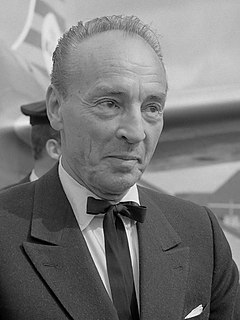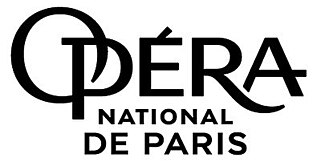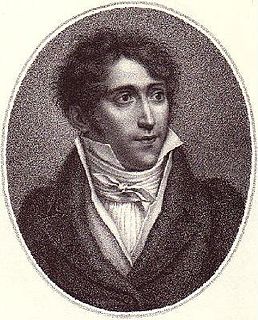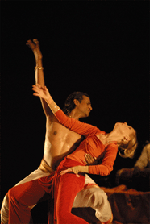Douglas Dunn | |
|---|---|
 at the Shiraz Arts Festival (1972) | |
| Born | Palo Alto, California, United States |
| Occupation | dancer and choreographer |
Douglas Dunn is an American dancer and choreographer based in New York City.
Douglas Dunn | |
|---|---|
 at the Shiraz Arts Festival (1972) | |
| Born | Palo Alto, California, United States |
| Occupation | dancer and choreographer |
Douglas Dunn is an American dancer and choreographer based in New York City.
Dunn premiered his professional company, Douglas Dunn and Dancers, in 1976, where he served as artistic director. He was commissioned by various companies to choreograph works including the Paris Opera Ballet, Groupe de Recherche Choréographique de l'Opéra de Paris, Grande Ballet de Bordeaux, New Dance Ensemble of Minneapolis, Walker Art Center (Minneapolis), Repertory Dance Theater (Salt Lake City), Ballet Théâtre Francais de Nancy, Institute for Contemporary Art (Boston), Perth Institute of Contemporary Art (Australia), and Portland State University (Oregon). [1]
Dunn uses many different choreographic elements in his dances which makes it hard to classify him into a specific genre of dance. [2] He conveyed a minimalist approach in his work by using elements of silence, stillness, simple movements, text, pedestrian movements, gestures, wit, and humor. He also incorporated varying aesthetics such as elaborate costume, music, set designs, and lights. In 101, a performance exhibit choreographed in 1974, Dunn used his apartment to create a maze of cubes of rough-hewn lumber that covered his entire loft. For four hours a day and six days a week in two months he held an open studio for viewers to enter the set and explore his creation in which they would find him lying on top of the boxes in a sort of trance with his eyes closed. [2] Among Dunn's best-known works are, Nevada, Four for Nothing, 101, Octopus, Time Out, Gestures in Red, and Lazy Madge. [3] He is mostly known for creating solo pieces like Lazy Madge, Haole, and Nevada. However, he also created many group pieces like Celeste in 1977 which featured about forty dancers. [4] and many later large group works such as Stucco Moon, Spell For Opening The Mouth Of N, Informations, Cleave, Buridan's Ass, and Cassations. In 1980, Dunn created Pulcinella as a commission for the Paris Opera Ballet. He was commissioned by l'Opéra de Paris in 1981 to set his work, Cycles, on the Groupe de Recherche Chorégraphique. [4]

George Balanchine was a Georgian-American ballet choreographer who was one of the most influential 20th-century choreographers. Styled as the father of American ballet, he co-founded the New York City Ballet and remained its Artistic Director for more than 35 years. His choreography is characterized by plotless ballets with minimal costume and décor, performed to classical and neoclassical music.

Jean-Georges Noverre was a French dancer and balletmaster, and is generally considered the creator of ballet d'action, a precursor of the narrative ballets of the 19th century. His birthday is now observed as International Dance Day.

The can-can is a high-energy, physically demanding dance that became a popular music-hall dance in the 1840s, continuing in popularity in French cabaret to this day. Originally danced by couples, it is now traditionally associated with a chorus line of female dancers. The main features of the dance are the vigorous manipulation of skirts and petticoats, along with high kicks, splits, and cartwheels.
Postmodern dance is a 20th century concert dance form that came into popularity in the early 1960s. While the term "postmodern" took on a different meaning when used to describe dance, the dance form did take inspiration from the ideologies of the wider Postmodern movement, which "sought to deflate what it saw as overly pretentious and ultimately self-serving modernist views of art and the artist" and was, more generally, a departure from modernist ideals. Lacking stylistic homogeny, Postmodern dance was discerned mainly by its anti-modern dance sentiments rather than by its dance style. The dance form was a reaction to the compositional and presentational constraints of the preceding generation of modern dance, hailing the use of everyday movement as valid performance art and advocating for unconventional methods of dance composition.

The Paris Opera Ballet is a French ballet company that is an integral part of the Paris Opera. It is the oldest national ballet company, and many European and international ballet companies can trace their origins to it. It is still regarded as one of the four most prominent ballet companies in the world, together with the Royal Ballet in London, the Bolshoi Ballet in Moscow and the Mariinsky Ballet in Saint Petersburg.
In the French courts during the 17th Century, ballet first begins to flourish with the help of several important men: King Louis XIV, Jean-Baptiste Lully, Pierre Beauchamps, and Molière. The combination of different talents and passions of these four men shaped ballet to what it is today.
La Sylphide is a romantic ballet in two acts. There were two versions of the ballet; the original choreographed by Filippo Taglioni in 1832, and a second version choreographed by August Bournonville in 1836. Bournonville's is the only version known to have survived and is one of the world's oldest surviving ballets.
Ulysses Dove was one of the most innovative contemporary choreographers of the past half-century.
Michael Duncan Clark CBE is a Scottish dancer and choreographer.

The Paris Opera is the primary opera and ballet company of France. It was founded in 1669 by Louis XIV as the Académie d'Opéra, and shortly thereafter was placed under the leadership of Jean-Baptiste Lully and officially renamed the Académie Royale de Musique, but continued to be known more simply as the Opéra. Classical ballet as it is known today arose within the Paris Opera as the Paris Opera Ballet and has remained an integral and important part of the company. Currently called the Opéra national de Paris, it mainly produces operas at its modern 2,723-seat theatre Opéra Bastille which opened in 1989, and ballets and some classical operas at the older 1,979-seat Palais Garnier which opened in 1875. Small scale and contemporary works are also staged in the 500-seat Amphitheatre under the Opéra Bastille.

Louis Pécour was a French dancer and choreographer. He is most well known for his work with the Académie Royale de Musique.

The Ballets Russes was an itinerant ballet company begun in Paris that performed between 1909 and 1929 throughout Europe and on tours to North and South America. The company never performed in Russia, where the Revolution disrupted society. After its initial Paris season, the company had no formal ties there.

Jean Coralli was a French ballet dancer and choreographer, best known for collaborating with Jules Perrot in creating Giselle (1841), the quintessential Romantic ballet of the nineteenth century.
David Gordon is an American dancer, choreographer, writer, and theatrical director prominent in the world of postmodern dance and performance. Based in New York City, Gordon's work has been seen in major performance venues across the United States, Europe, South America and Japan, and has appeared on television on PBS's Great Performances and Alive TV, and the BBC and Channel 4 in Great Britain.
Lucinda Childs is an American postmodern dancer/choreographer and actress. Her compositions are known for their minimalistic movements yet complex transitions. Childs is most famous for being able to turn the slightest movements into intricate choreography. Her use of patterns, repetition, and dialect has caused her to have a unique style of choreography that is often imitated for its ability to experiment.
Jean-Louis Aumer was a French danseur and choreographer, who was born in Strasbourg on 21 April 1774, and who died in Saint-Martin-de-Boscherville in July 1833. Educated at the school of the Paris Opera Ballet, he joined the company in 1801 after an initial engagement with Jean Dauberval in Bordeaux. The Paris Opera's maître de ballet Pierre Gardel presented an obstacle which led Aumer to choose the Théâtre de la Porte Saint-Martin as the venue for which to create his early ballets. Faced with the implacable competition from Gardel, Aumer left France for engagements in Kassel (1808–1814) and Vienna (1814–1820). Brief periods in Paris (1821–1822) and London (1824–1825) were followed by his return to the Paris Opera Ballet (1820–1831), where, enriched by the experience of working abroad, he engaged in a profound renovation of the French repertory, capped by his chef-d'œuvre, Manon Lescaut (1830).

Carolyn Carlson is an American born French nationalized contemporary dance choreographer, performer, and poet. She is of Finnish descent.

Sally Rachel Banes was a notable dance historian, writer, and critic.

James Waring was a dancer, choreographer, costume designer, theatre director, playwright, poet, and visual artist, based in New York City from 1949 until his death in 1975. He was a prolific choreographer and teacher. He has been called "one of the most influential figures in the New York avant-garde in the late fifties and early sixties", "one of dance's great eccentrics", "a focal point for dance experimentation before the existence of the Judson Dance Theater", and "the quintessential Greenwich Village choreographer in the late 1950s and 1960s". Waring's collage style of building dance works influenced the development of the avant-garde Happenings which were staged in the late 1950s.
Vincent Warren, was a Canadian dance historian and lecturer. After a distinguished career as a ballet dancer and teacher, he became widely known and respected as a historian and archivist. He is celebrated as a leading figure in the dance world of Canada.